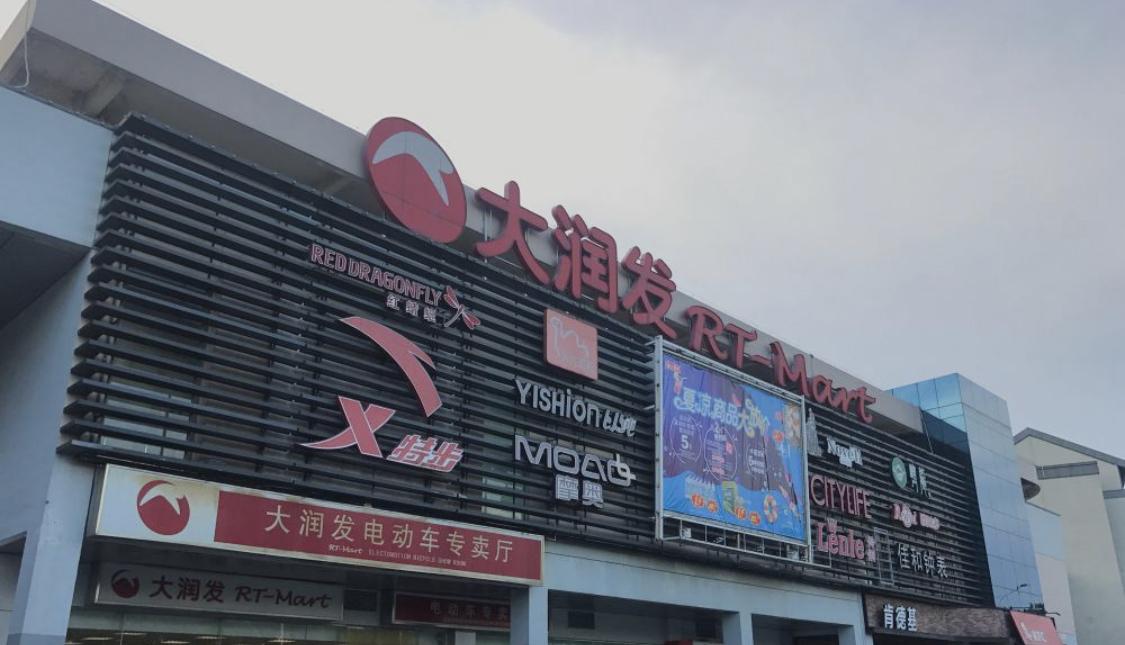"Go, go to the supermarket", many post-85s and post-90s people will have this memory when they were young, and they are taken by their parents to visit a variety of large supermarkets for half a day, even if they don't buy anything, they are very happy. Big supermarkets such as RT-Mart, Tesco, Carrefour, CR Vanguard, Bu Bee Lotus, and Century Lianhua have become the memories of the post-85s and post-90s generations.

However, with the passage of time, large supermarkets such as RT-Mart, Tesco, and Carrefour are gradually disappearing from the memories of the post-85s and post-90s, and they are less and less accustomed to shopping in large supermarkets. The change brought about by the consumer side is that large supermarkets continue to close.
According to the statistics of Lianshang Network, 22 supermarket companies such as Yonghui Supermarket, BBK, Gaoxin Retail, Lianhua Supermarket, Jingdong Qixian Supermarket, Carrefour, Wal-Mart, and Wumart will open a total of 1478 new stores in 2020; at the same time, at least 835 stores will be closed.
Judging from the above data, why are the big supermarkets that were once popular now more and more unsatisfactory? What are the factors that make large supermarkets no longer popular with consumers? Large supermarkets are overcrowded on holidays, parking spaces cannot be found, and the long queues at the cash register seem to have become a long time ago. The ebb and flow of traditional supermarkets is mainly related to four factors:
First, consumers' novelty about big supermarkets has disappeared. When RT-Mart, Tesco, Carrefour and other large supermarkets rose, just in time to catch up with the trend of China's consumption surge, on the one hand, consumers' disposable income increased greatly, which means that consumers have enough money to buy what they want; on the other hand, consumers have experienced a period of commodity scarcity, so when the shelves of large supermarkets are placed in front of consumers, there is a feeling of "Liu Grandma entered the Grand View Garden", and the things of large supermarkets have a very great attraction for them. Coupled with the fact that the price of large supermarket goods is relatively cheap, consumers naturally like to "visit the supermarket".
Traditional big supermarkets have been popular in China for more than ten years, but popularity does not mean that it will always become the "favorite" of consumers, consumers have lost their initial sense of novelty for large supermarkets, and "visiting supermarkets" is not so interesting.
Second, the impact from e-commerce. The advantages of traditional large supermarkets are many, complete and cheap, but these advantages are very uncompetitive in the face of e-commerce. Large supermarket SKU (inventory unit) is limited by physical space, the number is limited, and e-commerce is not limited by physical space, taking Jingdong as an example, as of November 2020, Jingdong self-operated goods exceed 5 million sKUs, traditional large supermarkets obviously can not have so many SKUs, sku categories, large supermarkets can not e-commerce platform pk.
In terms of price, the traditional large supermarket has gradually lost its advantage, it is difficult to compare the price with the whole network of merchants, just like Taote, Jingxi, Pinduoduo and other platforms, the price of large supermarkets is completely compared to them.
Third, the diversion of small supermarkets. Not only is e-commerce grabbing the share of large supermarkets in the retail market, but also small supermarkets are also grabbing the share of large supermarkets, such as 24-hour supermarkets such as FamilyMart and Ke, covering various large and small communities with a lower high density, and there are 7 or 8 convenience stores and supermarkets in the community where I live.
For most consumers, the goods with higher consumption frequency can be purchased in these convenience stores and small supermarkets that are closer to each other, while the goods with low consumption frequency and high unit price can be purchased in special stores or online, and the demand for shopping in large supermarkets is intercepted.
Fourth, consumers' shopping habits have changed. Compared with the previous generation, the current consumption habits of young people are consistent with the growth path of e-commerce, they prefer to shop online rather than go to offline shopping malls, coupled with the popularity of takeaway, young people are less willing to go offline shopping.
The ebb and flow of large supermarkets is also a microcosm of the changes in China's retail industry, consumer demand and environment have been changing, and the role of retailers has naturally changed.
However, the ebb and flow of large supermarkets does not mean that the form of supermarkets will withdraw from the retail industry, and the three changes in the retail industry are:
1) While closing stores, large supermarkets are also opening more and more "small shops", that is, convenience stores and small supermarkets;
2) When consumers use takeaway shopping, they will also choose to buy goods in supermarkets;
3) Large supermarkets are also launching different consumption strategies for specific consumer groups, for example, in the consumer groups of large supermarkets, mainly family combinations or the elderly, large supermarkets have launched products that meet their needs.
The data shows that from January to August 2021, the total retail sales of consumer goods in China 281224 billion yuan, an increase of 18.1% year-on-year, an increase of 8% over the January-August period of 2019. Among them, the retail sales of consumer goods other than automobiles 252739 billion yuan, an increase of 17.8%
Whether it is RT-Mart, Tesco, Carrefour, or JD.com, Tmall, Pinduoduo, China has a huge consumption power and consumer population, which is the biggest benefit for retailers, of course, it is precisely because the market size is large enough, there will be such fierce competition, and competition will promote innovation, no one dares to guarantee that the current retail format will always be so, thirty years of Hedong, thirty years of Hexi, can keep up with consumers, will go further.